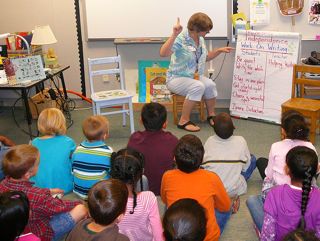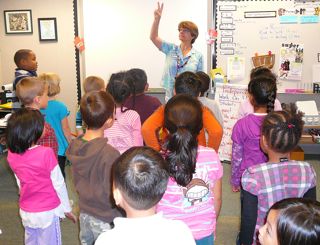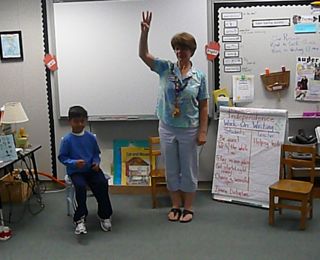Strategy for Releasing Students Who Have Trouble Starting Right Away
Join Our Community
Access this resource now. Get up to three resources every month for free.
Choose from thousands of articles, lessons, guides, videos, and printables.
We’d done the 10 Steps to Independence, I’d stayed out of the way, we’d modeled, self-reflected, and reviewed the chart, and it still felt bumpy. I was reluctant to start the barometer child interventions, but was desperate for us all to feel the joy that comes with success.
I often release my students with a one–two–three. I say “One” while holding up one finger. They take a deep breath, relax, and mentally review the I-chart.

I stand, holding up two fingers, indicating that students should stand and think of two successful spots in which to work (in case their first choice is taken when they get there).

They watch my fingers (and so do I) because three fingers is the silent signal to quietly walk away and get started. I freeze for about 30 seconds while they get started.

Last week, I looked at them very seriously and said, “Boys and girls, most of you have really got it. Most of you are being truly independent and successful. It’s still a bit bumpy for a few of you. If you feel like you have almost got it, but you aren’t quite independent, then I want you to freeze with me when I release your friends. We are going to watch the students who really have it. When you see how they do it, and you are ready to do it too, look at me and nod. I’ll release you with a nod and a smile, and you can go get started too.”
Three kids volunteered to stay behind and to be frank, only two of them needed to. I think the other one just wanted to see what it was going to be like. Well, it was magic. The children who left found successful spots and got started right away (with the exception of one little girl, to whom I finger-motioned to come and freeze with us). After watching the room full of correct models, my other students looked at me as they felt ready, nodded, and off they went. Since everyone else was engaged, they didn’t have the distractions that usually waylay them and were able to hunker down and get busy.
As the week progressed, I varied between letting students self-assess and freeze with me, and specifically requiring certain children to freeze with me. Each round began smoothly, and our stamina built as a result.





